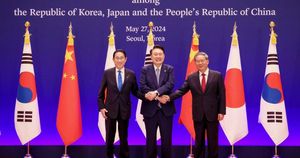On February 20, 2025, significant updates emerged from various regions, including immigration extensions and new visa allocation policies aimed at improving efficiency and flexibility. The Indian Immigration authorities have announced the extension of validity for all Person of Indian Origin (PIO) cards, including handwritten ones, effectively prolonging their acceptance as valid travel documents until December 31, 2025. This extension effectively pushes back the previous deadline of December 31, 2024.
The extension applies to PIO cards valid as of January 9, 2015, allowing cardholders to continue traveling to and from India without facing issues at the border. This notice is conditional upon International Civil Aviation Organization (ICAO) regulations, meaning if ICAO decides to invalidate handwritten cards, holders will need to attain appropriate visas from Indian Missions or Posts.
“This extension provides valuable time for PIO cardholders to transition to OCI cards,” stated the Embassy of India, encouraging all cardholders to convert their PIO cards to Overseas Citizen of India (OCI) cards before the deadline. OCI cards facilitate lifelong visa-free travel to India, making the transition more appealing for many. The urgency of this call is underscored by potential complications should ICAO alter its directives, prompting cardholders to act swiftly.
Shifting focus to New Zealand, Immigration New Zealand (INZ) has also announced changes to how it manages international student visa applications. INZ will now prioritize applications from students who are already studying in New Zealand and seeking to apply for second or subsequent visas for different courses or providers. This alteration aims to improve processing efficiency during the busy summer period.
“We aim to improve flexibility and efficiency during the summer processing peak,” remarked New Zealand Immigration, alluding to their strategy of addressing immediate demand without sacrificing comprehensive service. While priority is granted, it does not guarantee the order of application processing, which remains date-sensitive.
Turning to Europe, new rules introduced by the Hungarian government concerning residence permits are also noteworthy. The recent law affects only applications submitted post-January 1, 2025, and selectively targets two types of permits: employment and guest worker residency. These changes reflect Hungary’s strategic focus on securing its labor market and managing immigration against specific criteria.
The guest worker residency is set strictly for strategic partners of the Hungarian government or certified labor rental agencies, and positions are limited mainly to nationals of Armenia, Georgia, and the Philippines. By capping eligible countries, the Hungarian government aims to streamline its immigration processes, though future adjustments could expand this list.
The residency for employment purposes caters to third-country nationals who do not fit other categories, requiring applicants to originate from countries with specific agreements with Hungary, again stressing compliance with local labor laws.
“This law only applies to new applications submitted after January 1, 2025,” confirmed representatives from the Embassy of Hungary, emphasizing regulatory clarity for potential applicants. The updated framework indicates Hungary's desire to manage immigration strategically, ensuring practical contributions to its economy.
These policy changes across various countries reflect broader trends of adapting immigration practices to account for current economic and social realities. The urgent call for PIO cardholders to convert their documentation stands as a timeliness indicator of growing governmental responsiveness. These updates herald shifting landscapes for many people aiming to navigate international borders effectively and with greater assurance.
Overall, February 20, 2025, marks a pivotal day for immigration policy with far-reaching impacts across multiple regions. These updates not only reflect immediate governmental priorities but also signal potential shifts within global mobility practices, responding to needs from diverse communities.



